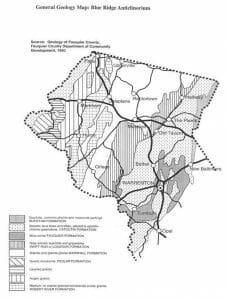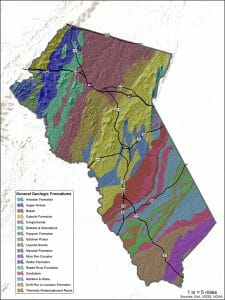
Fauquier Wine combines exceptional granite based soils with warm summers that advance ripening, followed by cool autumn conditions that extend ripening time; resulting in the East Coast's highest potential for quality wines. The rolling hills of the Piedmont transition to steep mountainside plantings, offering landscapes shifting from serene pastoral to enchanting forests and stunning vistas.
Fauquier Wine History
While the piedmont has generally transitioned from traditional agriculture to vineyards; our mountainsides were once apple orchards which directly supplied the Washington DC area, until the low productivity of these soils was outcompeted by higher yielding states such as New York, Pennsylvania, and the West Coast; at which point national supply chains forever changed the economics of agriculture. The mountainsides were abandoned to natural reforestation, until today they are being reclaimed as the premier terroir for producing the highest quality winegrapes in Virginia and the East Coast.
Geology
The geological formation of Northern Fauquier is predominantly granite based, often as gneiss and schist which are metamorphic formations derived from granite and occasionally greenstone. The coarse texture of our soils lends itself to exceptional drainage, and provides grapes with concentration even in our moist ripening season.
Topography
Our vineyards range from 450’-650’ throughout the Piedmont, and can reach as high as 1,800’ on mountain sites; providing an opportunity to select the ideal grape varietals for each location. The rolling hills and mountainsides can offer amazing views, but also pose the challenge of topography. Winegrapes thrive in well drained soils on gentle slopes; as such our lower wet areas and exceptionally steep rocky locations must be removed from vineyard planting. This results in inherently small lot production, which exhibits distinct characteristics of each site and the region.
Ripening Temperature
A unique attribute to Fauquier, is the rapid cooling of autumn as the grapes are approaching peak ripeness. The longer the grapes are allowed to ripen, the slower the progression, and simultaneous development of enhanced flavors and concentration. Under cooler conditions, the grapes tend to thrive under reduced disease pressure, facilitating the call for patience in quest for optimal fruit development.


